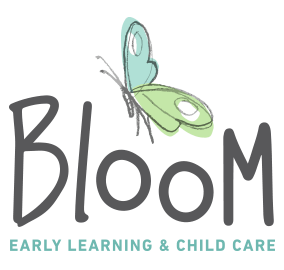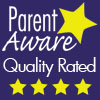 Parents of Bloom children frequently approach us to ask how they can help their early-age children develop improved pre-literacy skills that lead to becoming a strong reader and experiencing academic success. Reading aloud is one important way babies, toddlers and preschoolers can build skills that boosts development. Many positive effects of reading aloud to babies and early-age children have been observed and studied. And parents wish to know about them.
Parents of Bloom children frequently approach us to ask how they can help their early-age children develop improved pre-literacy skills that lead to becoming a strong reader and experiencing academic success. Reading aloud is one important way babies, toddlers and preschoolers can build skills that boosts development. Many positive effects of reading aloud to babies and early-age children have been observed and studied. And parents wish to know about them.
One new mom asked, “I read to my baby, but is it supporting development of vocabulary and early literacy skills, since he’s so young? Are there any statistics that prove reading aloud to babies helps them acquire these skills?” The results from a Pediatric Academic Societies study reveal that reading to babies as young as six months of age leads to larger vocabularies and better early literacy skills four years later, just as the children are preparing for school.
“We see positive effects in reading aloud to early-age children. Early language and literary experiences help them thrive emotionally, physically and mentally, leading to improved reading comprehension reflected in higher reading scores, and academic success,” said Deb Ottman, Bloom board member. “Supporting language and communication skills helps foster bonding with children. They prepare a child to build social and emotional skills, develop memory and flexible thinking capabilities, as well as control impulses.”
“Reading aloud to babies and young children has positive effects in many developmental domains. Early, repeated experiences with books help them thrive cognitively, socially, and emotionally and establish important skills they’ll need for school,” said Ottman. “Positive relationships with important adults support little ones in their social and emotional development. Spending time reading, snuggling, and talking together help foster that relationship. Believe it or not, this positive relationship is also what leads to kiddos more easily acquiring skills like flexible thinking capabilities, impulse control, working memory, and regulating their emotions. These are skills needed to succeed at learning.” Ottman goes on to say, “Reading together does more than that. Talking together about the books themselves, like the pictures, the characters, or the plot introduces and builds vocabulary, strengthens communication and pre-literacy skills, and helps prepare kiddos to learn to read, too. And reading well is foundational to doing well in school.”
Parents and care-givers can help children boost their early pre-literacy skills by taking into account and adjusting for their age, preferences and capabilities:
- Babies and young children’s primary brain development requires close, in–person contact. Reading aloud is a great way to support this.
- Toddlers love playing the same songs and music, and reading the same story books repeatedly as they learn about predictability and permanence. Reinforce this notion of permanence, by establishing regular reading activities like quiet time or bedtime within family routines.
- Through reading stories together, preschoolers can learn how to behave appropriately in different situations by seeing how book characters respond in similar situations.
- All children’s language skills experience growth from being read to.
Children who are read to more often are exposed to additional new words and develop a more robust understanding of language, according to United Through Reading. A 2019 study by the Ohio State University found that young children whose parents and caregivers read to them five books a day enter kindergarten having heard about 1.4 million more words than kids who were never read to.
Tips for Reading Aloud to Children
 Infants
Infants
#1. Start reading to your baby as soon as you bring baby home; it is never too early! Your child will quickly learn that story time is bonding time. Establish it as a part of your shared daily routines.
#2. Use Board Books. These books provide a sensory learning experience and are durable with different textures and materials. Babies learn with their mouths – let them chew on the book – as well as grab and explore them safely. Books may be made of vinyl, heavy card board, cloth or other material that is sturdy and appealing.
#4. Help babies (and toddlers) to explore books using their five senses. Some books offer the chance for young readers to smell new scents or hear new noises. Others incorporate unique textures such as soft, bumpy, or scratchy. Physically guide your baby’s hands to activate the noise or feel these textures, and say the word for what they are hearing and feeling.
#3. Select and name objects and point out pictures in story books. Point at a chair on the page and say “chair.” Extend this exchange by adding a description – and new vocabulary – such as “The chair is red.” Try playing question and answer: (Say: “Where is the kitty?”) Cover the kitty on the page. Then ask where the kitty is when you uncover the picture. (Say: “There’s the kitty!”)
#4. Encourage babbling and emerging speech skills that the book elicits by affirming the child’s response. Point to the picture and repeat the word, as in “Yes, that’s a ball! The ball is round!”
Toddlers (1-3 years)
#1. Help your child acquire new vocabulary words and build speech skills. Ask your toddler to name things or find something in a picture, or have your child point out the car in a picture. Ask what it is, what sound it makes, or its color or shape. Use pictures to teach new words.
#2. Ask children to tell you about the story. For young toddlers, they may only be able to say one word, such as “Moo!” Respond by filling in details, such as, “Yes! The book was about the animals on the farm!” Older, more verbal children can use their creativity to share their version of the story.
#3. Use the story to start a conversation (Say: “Look! The animals are on the swings. Remember when you had fun on the swings at the park?”).
#4. Use books to introduce and name emotions. It is critical for toddlers to begin to learn about feelings. Reading together helps them begin to learn to recognize emotions in themselves and others, and to give them a name. Books with simple pictures that show basic emotions like “happy,” “sad,” “angry,” or “surprised” are an excellent place to start.
#5. Take time as you read to ask questions, to have your child respond, or to ask their own questions. Cuddle with your toddler, looking at your child and the book. Toddlers are naturally curious, eager to learn, and delight in spending time with you.
Preschoolers (3- 5 years) 
#1. Allow your children to help select books, and look for books that might interest them or reflect an important event your child is facing, such as welcoming a new baby into the family, going to the dentist, or riding the school bus.
#2. Read books with characters kids recognize and enjoy. Talk about how these characters behave, face situations, and express their emotions. Use the stories to help your child learn appropriate behavior, expectations, and values – share your ideas, and listen to theirs!
#3. Continue to identify letters with your child, both upper and lower case, and introduce the sounds they make. It’s easy to start with the first letter of your child’s first name – such as “M” for “Marcus.”
#3. Point out rhythms and rhymes in stories and give your preschooler the opportunity to repeat rhyming phrases.
#4. Visit your local library and register yourself and possibly your child for a library card.

All Young Children (ages 0-5 years)
#1. Make story time with your child warm, loving, and fun! Cuddle, showing enthusiasm, and be expressive while reading.
#2. Include reading together as a part of your daily routine. Read aloud with your child at regular times every day such as before bedtime or after dinner.
#3. Read print books. Children can learn how to care for and navigate through a book through physical modeling, such as how a page is read (top to bottom, left to right), and how to properly turn pages (from top right corner).
#4. Take your cue from your child – choose books that you know your child will enjoy, are appropriate for their age, and match their interests. If you have difficulty selecting books for your child, visit websites such as Scholastic or 125 Kids Books We Love.
#5. Encourage children with verbal capabilities to talk about the story. Prompt them by asking questions during the story (“Will the dog find its home soon?”), and answering theirs. Explain words that are new to them. Afterward, encourage your child to share their favorite part or tell the story to you.
#6. Introduce children to basic concepts of storytelling by reading stories, talking about characters and the different parts of the story: beginning – middle – end. Explain what authors and illustrators do.
#7. Be a role model! When your child sees you reading – a newspaper, a book or a magazine – you are demonstrating the importance of reading. Talk to your child about why you like reading, and how reading helps you.
#8. Attend Read-Aloud Events. Libraries, bookstores and local community centers typically offer read-aloud events for babies, toddlers and preschoolers. We hosted a Read-a-thon and an author event in April at Bloom, but any time is perfect for celebrating literacy!
You are your child’s first teacher. Spending close, nurturing time reading together offers your child so much. Reading together helps to cement the special bond you have with your child. It also supports the development of pre-literacy and language skills – and may lead them to becoming a life-long lover of reading! We recommend that parents, caregivers and teachers read aloud to children, using these tips to foster a child’s love of reading. If you have additional questions about reading aloud to your child, email Bloom.
Citations include:
The Importance of Reading to Your Children,
By Children’sbureau blog, May 11, 2023
How Reading to Children Improves their Communication Skills
By Zeus Martinez, Discover, by Xplor
Literacy Teaching Toolkit for Early Childhood
by Victorian Government, Department of Education, Australia, September 19, 2022
Supporting Language and Literacy Skills from 0-12 months
By ZERO to THREE, May, 19, 2010
How Can you Encourage a Child’s Language Development?
By NCT Charity
7 Easy Reading Tips for Parents of Preschool Kids
By Kyle Zabawa, Kids Konnect Infant Care and Preschool, April 29
Reading Tips for Parents of Preschoolers
By Reading Rockets/WETA, See activities/articles
12 Tips to Boost Early Literacy
By Start Early (It’s blog and Featured Articles Section), February 23, 2024

Irene Connors donates her time grant writing and blogging for social service agencies. She served as an information officer/communications specialist for most of her career at the Minnesota Department of Employment and Economic Development (DEED). In addition, she had a role in the Workforce Development unit in which she assisted job seekers find meaningful careers. Prior to joining DEED, she was employed at Allina Health as a communications coordinator and as an economist at the U.S. Department of Labor in Washington, D.C. She earned a bachelor’s degree from the University of Virginia and completed graduate work in professional communication at the University of St. Thomas (Twin Cities).







